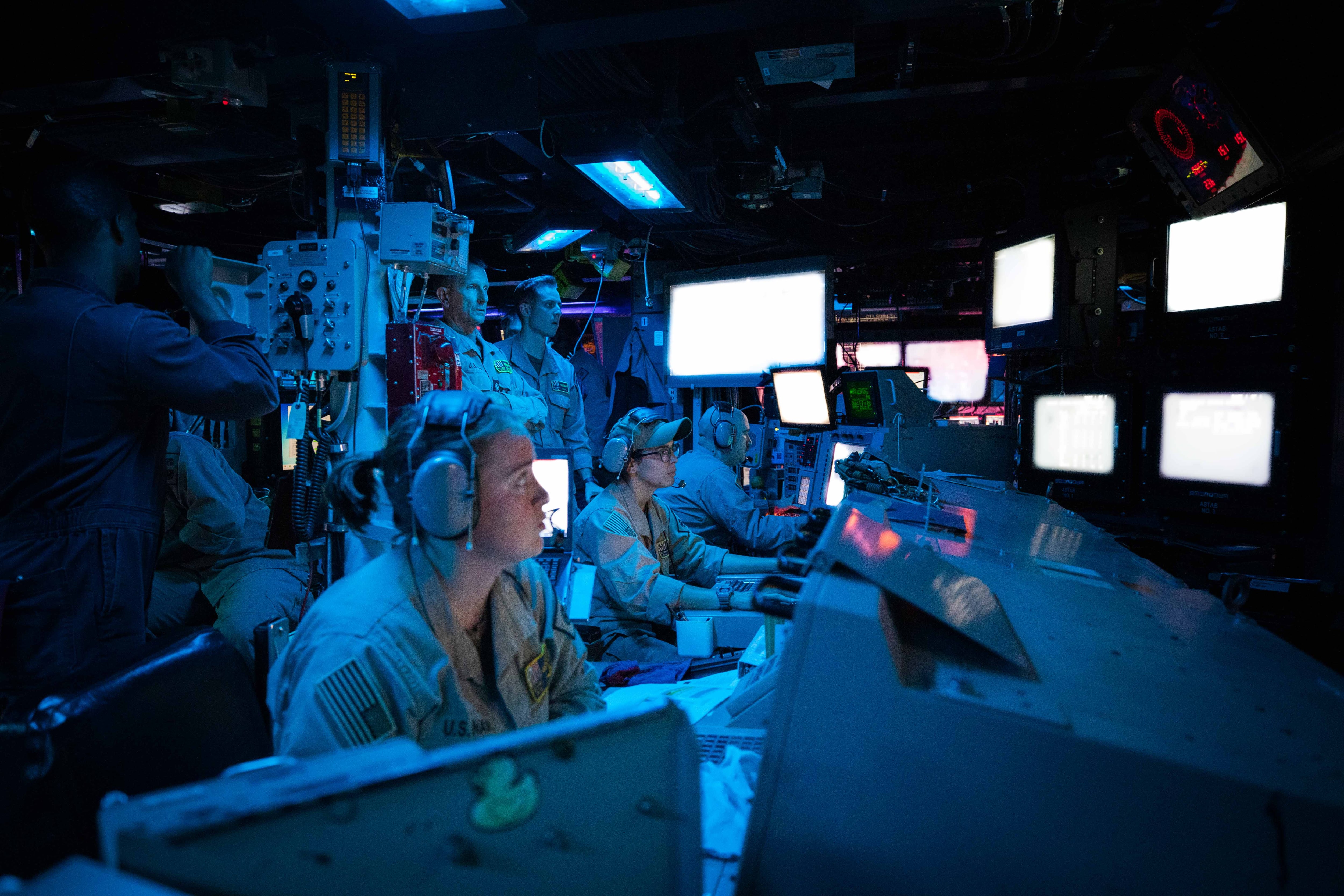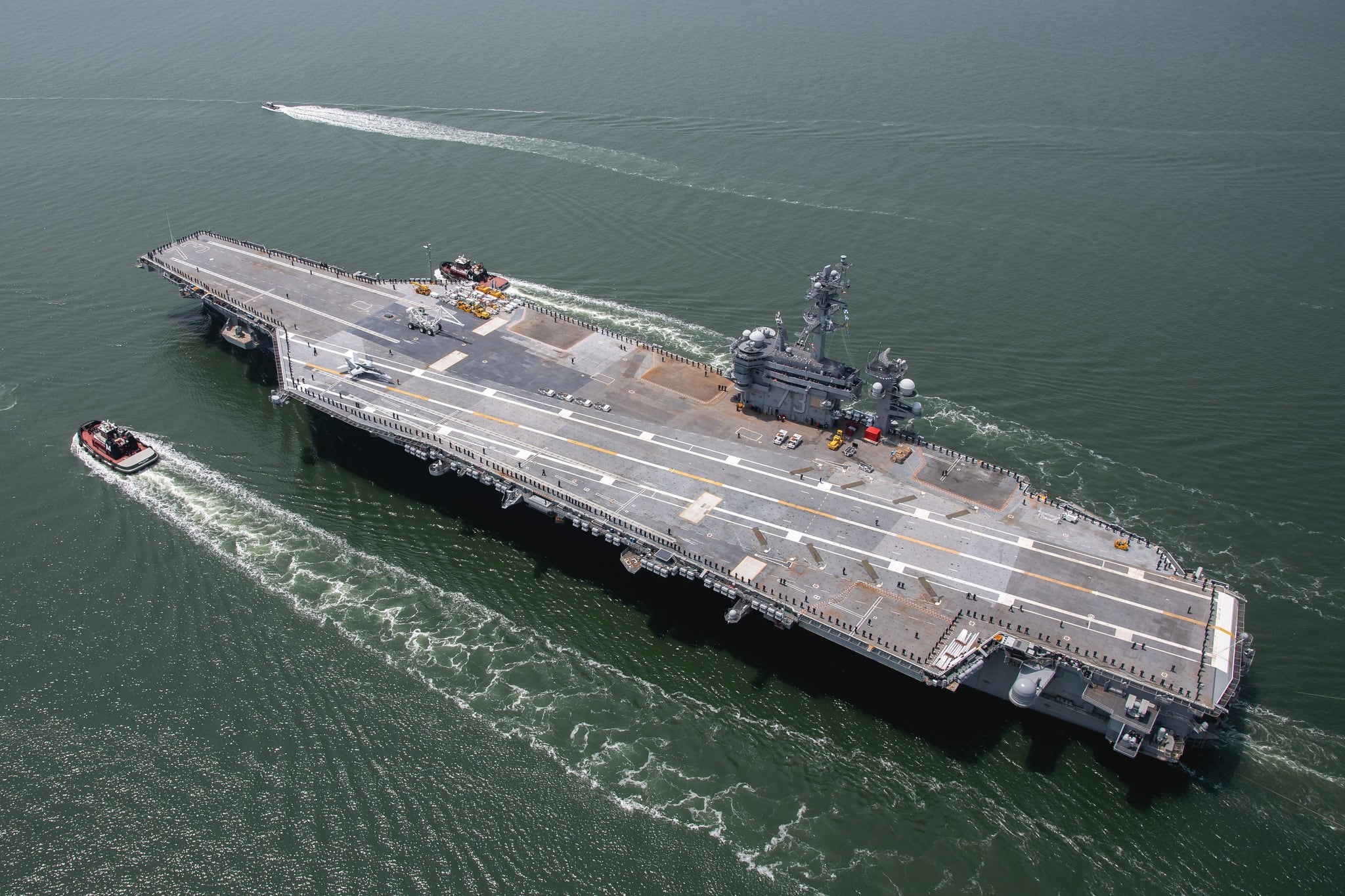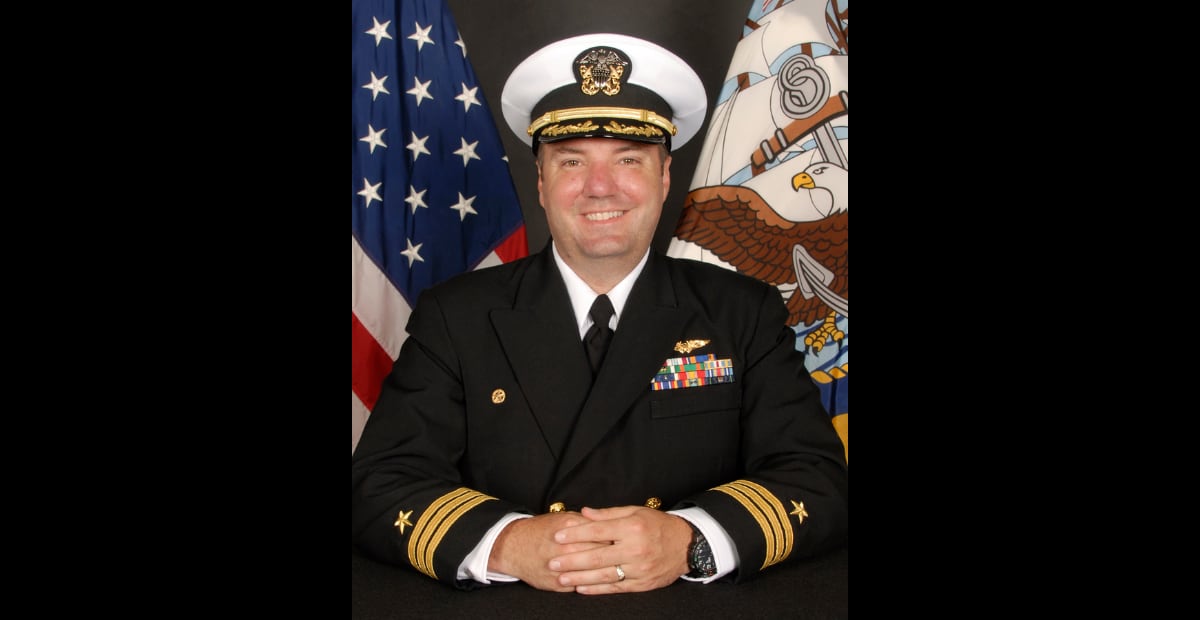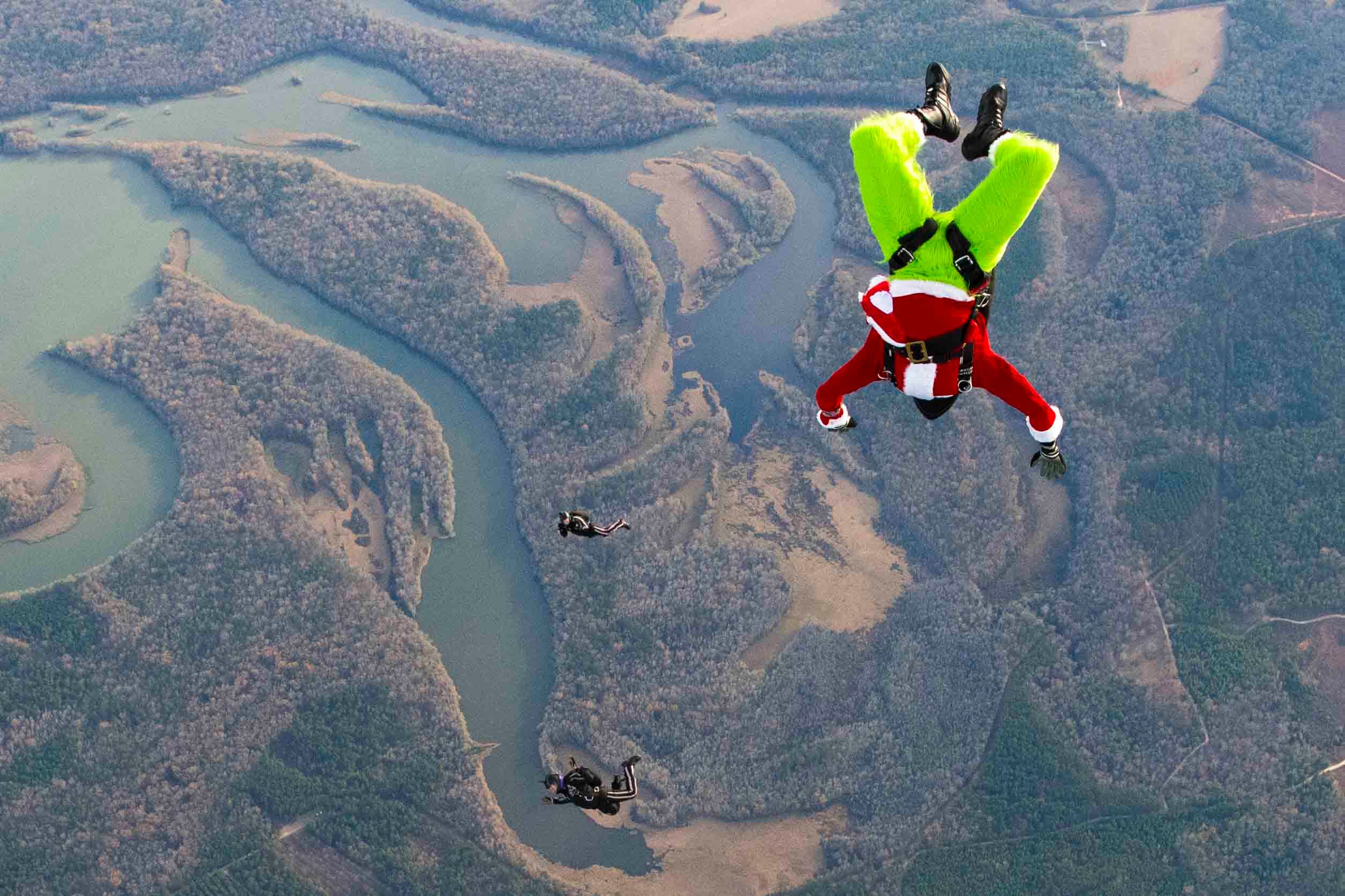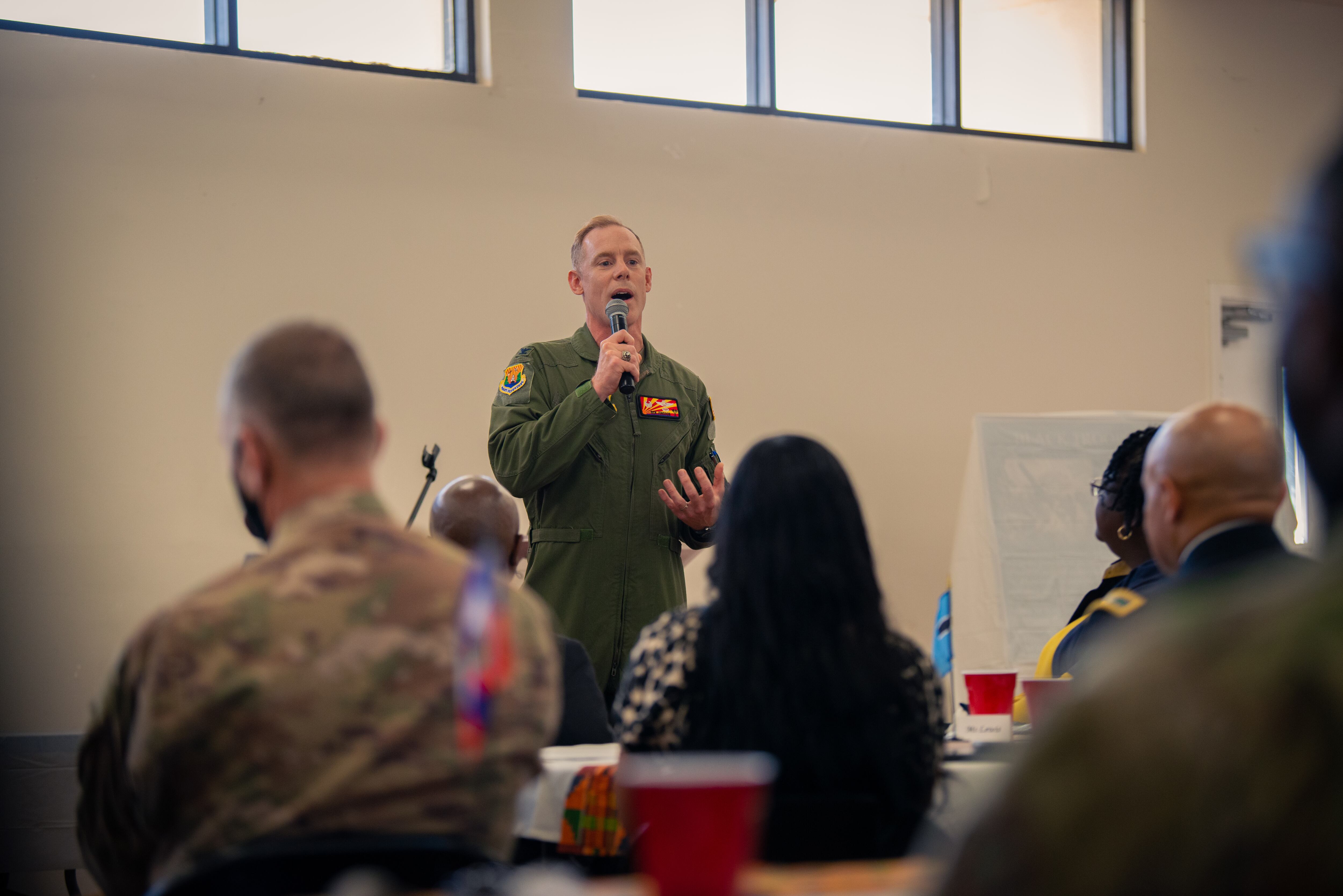ARLINGTON, Va. — The U.S. Navy submarine force is nearly done implementing reforms following an October 2021 undersea collision of attack submarine Connecticut, according to the commander of submarine forces.
Vice Adm. William Houston said 27 of 28 major actions recommended in the command investigation have been completed, with the last one set for completion in the spring.
These major actions include new procedures, additional training, and new technology to help submarines navigate.
Connecticut was damaged when it struck an undersea mountain in the South China Sea, which features shallow waters and rugged terrain.
“Fundamentally that accident should have been avoided. The crew was more than capable of doing that,” Houston said at the Naval Submarine League’s annual conference here.
“In this case, there’s actions that the ship did not take that were required per procedure. So we’re giving them additional procedures, and we’re also giving them additional training so that they understand some of the principles behind those procedures,” he later told reporters.
On additional training, he said the entire officer curriculum had been revisited, and junior officers will now be given additional navigational training. Junior enlisted sailors will also receive more training on navigation and how to properly use their navigation equipment.
The submarine command course will also specifically train prospective commanders on how to use the tools at their disposal to avoid an underwater mishap, rather than just warning them to beware underwater obstacles.
Houston said he also had a particular interest in the systems crews use to navigate underwater, when the crew is wholly reliant on sensors rather than being able to look out a window for situational awareness.
Today, he said, the crew looks at the electronic navigation system to find the shallowest spots to avoid. In the aftermath of the Connecticut collision, “we rapidly advanced computer capability to go ahead and look for all the shallow spots on the chart. And we can do that with 100% accuracy in about three seconds,” he said, without asking the crew to manually check for shallow spots.
Houston said that system will be fielded in two months.
During Houston’s speech, he also addressed fire safety efforts by the submarine force in the aftermath of the Bonhomme Richard amphibious warship fire in 2020.
He showed a photo of a complex tangle of piping sitting on a pier. The Rube Goldberg-style contraption, he said, could prevent the next submarine fire disaster, like the one that took Los Angeles-class submarine Miami out of commission in 2012.
“When Miami occurred, we wanted to have a suppression system or something that gave us more time, especially on a strategically loaded [ballistic missile submarines with nuclear weapons], to go ahead and lower the heat level on that if we ever had a fire break out,” Houston explained.
“We’ve been studying this problem for 10 years, millions of dollars of investment. I challenged the status quo with my team. In 90 days for $10,000, we developed that system,” he continued pointing at the photo. “It’s a temporary manual system, but that will put over 800 gallons per minute in the missile compartment upper level and buy additional time.”
He said the makeshift system had been fielded at Naval Submarine Base Kings Bay in Georgia, and is in the process of being installed at Naval Base Kitsap in Washington.
Megan Eckstein is the naval warfare reporter at Defense News. She has covered military news since 2009, with a focus on U.S. Navy and Marine Corps operations, acquisition programs and budgets. She has reported from four geographic fleets and is happiest when she’s filing stories from a ship. Megan is a University of Maryland alumna.


